Walking down 34th Street from Walnut to Ludlow to Market to Powelton, I was thoroughly disoriented once the “Giant Heirloom Market” sign disappeared behind me. Last semester, my friends and I decided to try Sabrina’s Café, a raved–about brunch place near Penn. As we walked, I left all navigation up to my friend, wary of my ability to direct us anywhere beyond Penn’s campus. New to Penn and new to Philadelphia, I was unaware that walking a few blocks northeast of the Quad would place us directly into Drexel territory.
While the college process felt like a never–ending deep dive into all possible universities in the United States, when I started Penn in the fall, I realized I knew very little about Drexel. Drexel is a research university with a cooperative education program, meaning that students are able to work in a professional employment capacity. Students can obtain 18 months of professional work throughout a five year undergraduate program, six months of professional work throughout a four year program, or complete a more traditional degree without co–op employment.
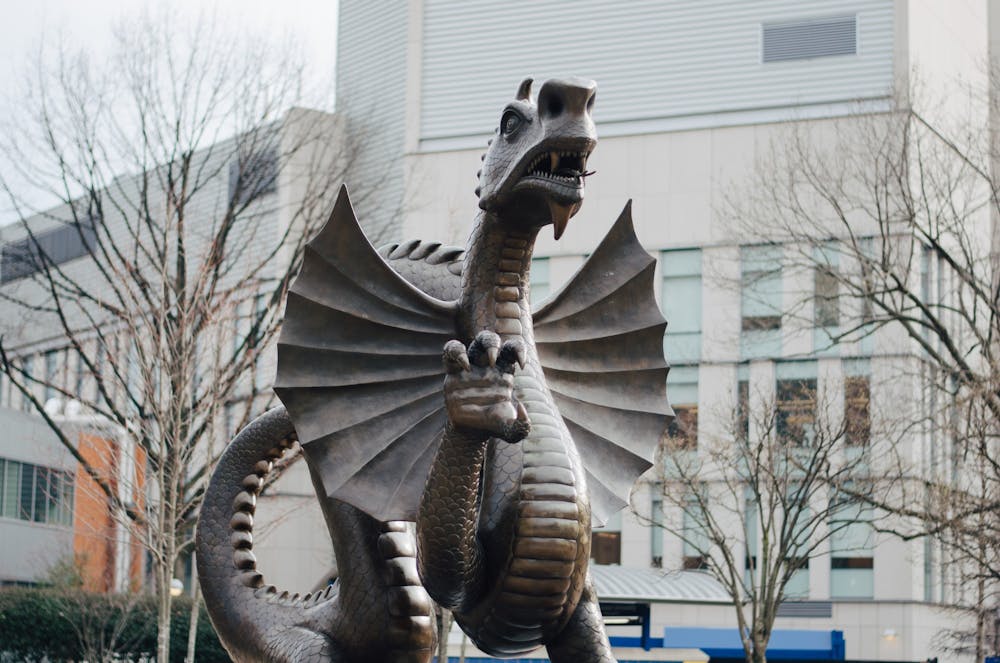
Drexel Dragon
Even as I entered my second semester, all I had heard about Drexel from other Penn students was that Drexel had better options for where students could use “DragonDollars,”—their version of Dining Dollars—named after their mascot, Mario the Magnificent. Many Penn students share my ignorance about our nearby, University City neighbor.
Eli Cohen (C ’23) says he’s only gotten to know Drexel after coming to Penn. Before exploring Drexel, he assumed that Penn had the better campus because of its historic architecture, but he soon discovered this wasn’t the case.
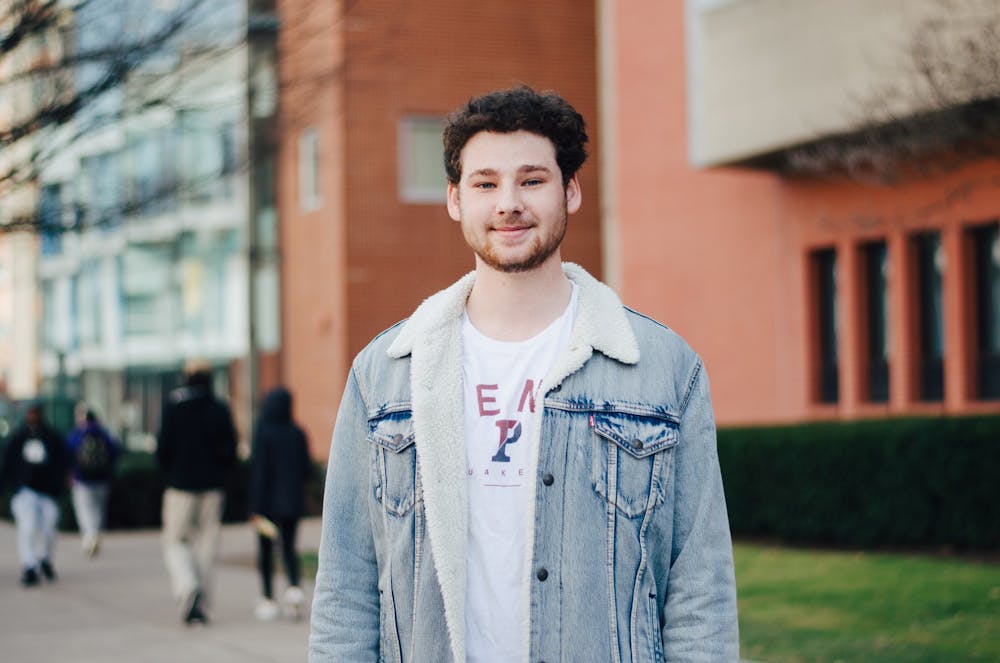
“Coming from an Ivy League institution, you would think the historic [aspects] that we have would separate us,” Eli says. “Like the Quad is beautiful, objectively, and on a sunny day, it’s great. However, on the way walking to 30th Street Station, I went through one of the parts of Drexel’s campus. There’s beautiful stone work that’s laid out. It’s very intricate and just not necessarily what you would expect.”
Eli has also noted the welcoming energy present on Drexel’s campus.
“Walking through one of their dining halls, there were [sports] team members there together for lunch and students working in coffee shops, and it definitely seemed very inviting and very studious,” Eli says.
With these wide–ranging notions of Drexel, I decided to spend time at Penn’s neighboring school to investigate the campus. I went to Drexel’s Starbucks, ate in Drexel’s “Houston Hall,” and snuck into a lecture as a Drexel student. I felt immersed in an entirely different, down–to–earth campus culture.
And in the process of learning about Drexel, I ended up learning a lot about what it means to be a Penn student.
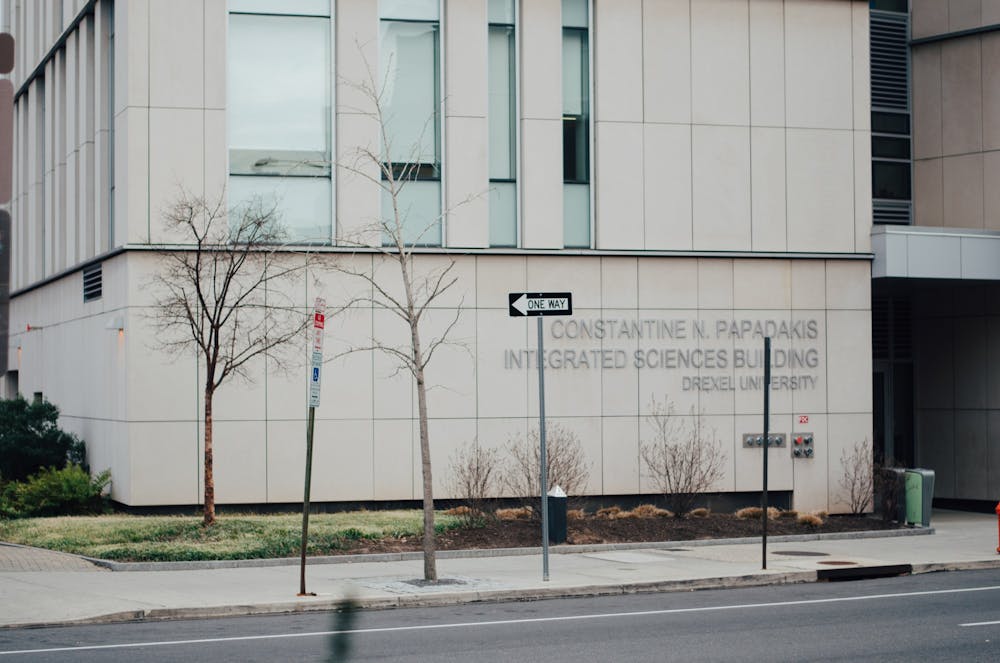
I begin my day at the Starbucks on the corner of 34th and Lancaster streets, where I watch people of all ages start their mornings. Some are sporting Drexel apparel and type busily on their laptops, while others wearing suits grab coffee. In the block leading up to Starbucks, I immediately notice how Drexel’s buildings are much more integrated with the rest of the city than those at Penn.
Because of the Penn “bubble,” I haven’t explored Philadelphia as much as I’d like. I feel unfamiliar with West Philadelphia beyond Penn’s boundaries, and I rarely visit the art museums and restaurants in Center City that initially drew me to Penn. Drexel’s community is more interlocked with the area and makes exploring the city feel more attainable.
But at the same time, I appreciate Penn’s defined campus. Attending college in a city was a priority for me during the college process, but I didn’t want to give up having a traditional college environment. Penn is one of the few colleges that I feel has both.

Urban Eatery
Drexel first–year Georgia Ridgway, who often spends time on Penn’s campus with her sister, a Penn student, agrees that being more immersed in the city can have its negatives.
“I like Penn’s campus a little bit more than Drexel’s because it feels like more of a campus in a city versus just being in a city,” Georgia says. “Some of the places, when you’re walking around, don’t necessarily feel safe because it’s like, here’s a building but then here’s a non–affiliated building.”
Overall, however, Georgia says she likes the fact that she attends a college with an urban campus.
“I love being in a city; that was one of the reasons I chose Drexel,” Georgia says. “I grew up in a really small town in South Jersey, so it’s kind of a big change coming to the city because there’s always something to do. There’s a million places to just get food or coffee on campus, so I really like that aspect of it.”
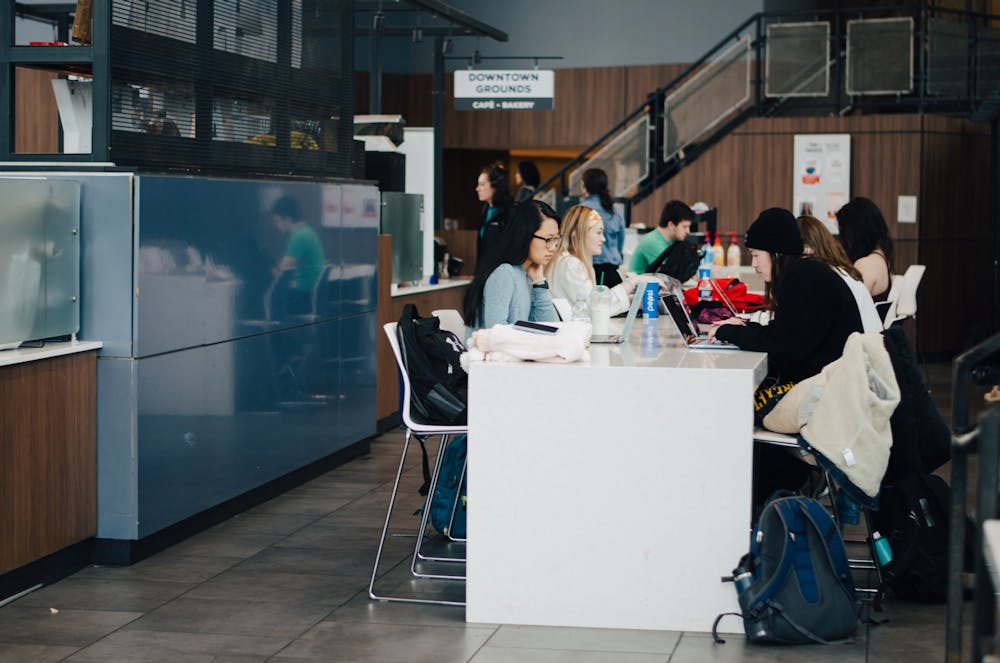
Drexel Dining
Once it was lunch time, I venture to Urban Eatery, one of many places Georgia says students can find extensive food options without leaving campus. Urban Eatery is a Drexel retail dining hall where students can use their dining dollars to pay. First walking in, my eye is drawn to the Chobani Creations Station. This and other retail stations, including a make–your–own smoothie bar, makes the Eatery feel like a high–end food court rather than a college cafeteria.
“From walking around campus, the food options definitely seem abundant and enjoyable,” Eli says. “They seem like name brand things, like Chipotle, Starbucks, Chobani breakfast bar—definitely things I would enjoy having on Penn’s campus.”

Walking around Urban Eatery, I see some people eating lunch together, but most are dining alone. Whether they’re working, listening to music, or scrolling through their phones, many are sitting by themselves at a booth or table. While Penn students certainly are independent, I’ve found that dining spaces are rarely occupied by parties of one. Houston Market is one of the few places where I see students eating by themselves, and they’re always armed with their computers and notebooks. I have a hard time imagining feeling comfortable enough to dine by myself, but for Drexel students, there doesn’t seem to be the same pressure.
At one table are two of the few students who are eating with company. Chelsea Gravereaux and Alasdair Bell are chatting away, enjoying their lunch together. As I approach them, Chelsea and Alasdair turn to me with a warm smile and agree to talk to me about their time as Drexel students. Both say they have loved their experience at Drexel so far and appreciate the fact that there is no one Drexel stereotype.
“I think there are a lot of different types of people on campus,” Chelsea says.
Alasdair says he’s found his community through his swim team, which he is on along with Chelsea.
“There are certain groups that are super close, like I know all the sports teams are super close, and I feel like every club is close,” he says. “I think you kind of find your people, and then you kind of stay with them.”
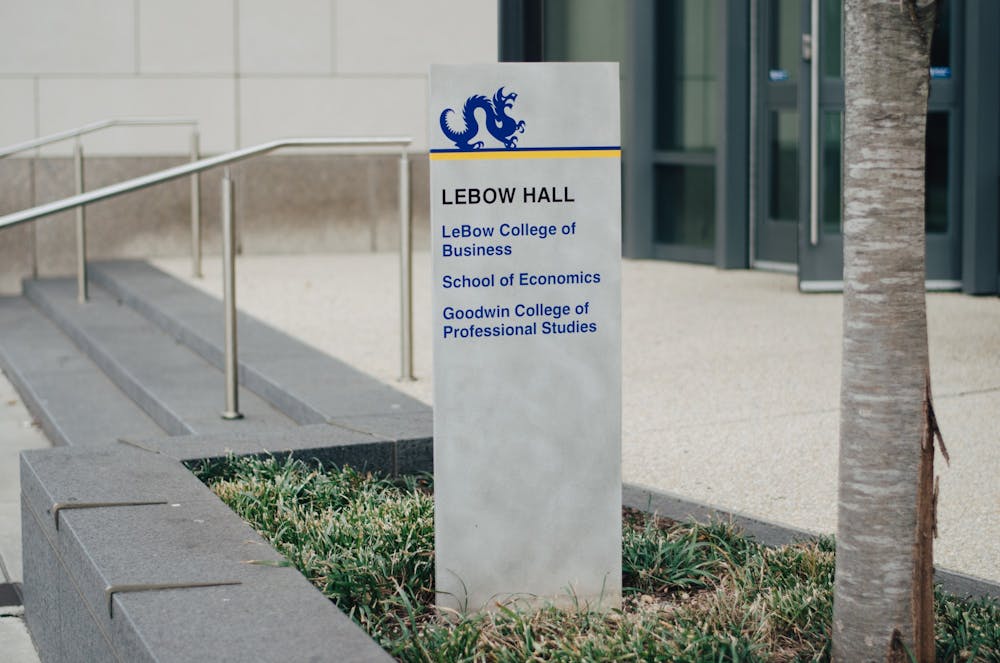
Lebow Hall
Despite the unfamiliarity with many students on campus, Alasdair and Chelsea both say Drexel’s environment feels welcoming with friendly students all around. Similarly, Georgia says she finds Drexel to be down–to–earth compared to Penn. Although there may not be one kind of Drexel student, there does seem to be a strong stereotype about Penn students.
“I’ve grown up being on Penn’s campus, seeing the people that go there,” Georgia says. “People are obviously very smart, and they look the part. But coming to Drexel and seeing it through the Drexel lens, when you go on Penn’s campus, everyone feels kind of out of place. Like, we go to class and wear sweatpants, sweatshirts, no makeup, and buns. The people on Penn’s campus always have their booties on, nice outfits, their bags. They look very put together, so when we have to go to CVS or something, it’s like ‘Oh, I should probably put on nicer clothes.’”
Walking around the campus myself, I also see more casual attire at Drexel than at Penn. While there certainly are students who wear sweatpants and sweatshirts to class, including myself, it’s not commonplace. Like Georgia, I experience Penn students dressing to maintain a more formal image.
Georgia says LeBow College of Business Hall is an open and common study place for all students — unlike Penn’s Huntsman Hall, where group study rooms are reserved for Wharton students. Entering LeBow Hall, I note the inviting nature of the space. Several women are seated near the door to the building, selling stationery to raise money for their sorority. Across from them, students fill several different nooks. Most are studying among a group, laughing interspersed with answers to problem sets.
From LeBow, I make my way to Papadakis Integrated Science Building, where I sit in on an Introduction to Political Science lecture. As a political science major, I’m familiar with Penn’s program, so sitting in on an intro poli–sci lecture offers me the best opportunity to compare the two school’s academics.
Before the class starts, the two guys seated next to me discuss edits on their midterm paper.
“I wrote qualitative when I meant quantitative,” one mumbles. “Ugh, I could’ve gotten a 100 if not for that! I wanna throw these AirPods!”
Hearing this, I can’t help but smile. Just like many Penn students, these Drexel students are motivated by scores and aim for perfection. Since Drexel operates on 10–week terms, the course is over half–way done. The guys next to me are worrying about their final grades.
As the professor Jon Santucci—a self–described “millennial”—walks in, he begins speaking about the paper. I immediately note that the lecture is much more discussion–based than my political science lectures at Penn. However, this could be a result of the size discrepancy between the two. My lecture had around 150 students in it, while this class has a maximum enrollment of 50, making it more conducive to discussion.
He then asks the class to share their thoughts on the Green New Deal. He explains that he’s speaking to a journalist later that day and wants their opinions.
“Who thinks it’s stupid?” Jon asks.
Amidst the discussion, the class discusses and agrees upon information from Fox News. I don’t know if it’s because of the smaller class size, the professor, or Drexel in general, but I’m surprised to see conservative viewpoints on open display. The candor with which the Drexel students and professor embrace the conservative perspectives on the Green New Deal provide a healthy debate, as opposed to unchallenged echo chambers frequently present at Penn.
Moving on from the conversation about the Green New Deal, which he says will prove useful for his interview, Jon starts his lecture on populism.
Jon gives a brief history on populism, delving into labor unions in the first half of the 20th century. He continues asking the class questions, incorporating discussion into his lecture far more than my political science lecturers at Penn, which I appreciate as an effective educational opportunity.
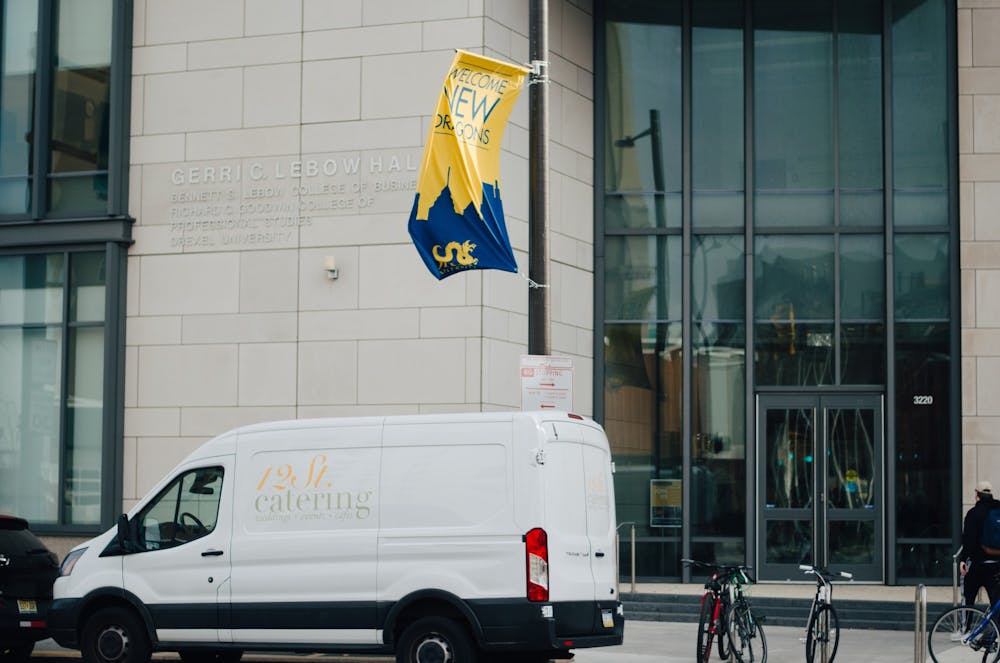
When I walk out of lecture, I watch groups of friends make their way to their next class, talking about homework and going on dates. I follow the crowds out of the building and started heading back to Penn.
Taking time away from Penn’s campus and spending it in a more relaxed environment is a refreshing experience. It’s easy to feel trapped in the Penn bubble or disheartened by everyone’s Penn Face. While I appreciate my day at Drexel, it also reminds me of the parts of Penn that make me glad I’m a student here. Walking back down 34th Street, past Van Pelt, and the Love sign, I feel a sense of relief to be back among the familiar.
